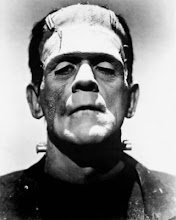The story of Frankenstein was started in the summer of 1816. Lord Byron and Mary Shelley’s husband inspired her to write the story. When she was at Eton College, Mary Shelley became interested in Luigi Calvani’s experiments dealing with whether or not electric shocks would make dead frog’s muscles twitch. Byron and Shelley talked about these experiments and with his help, she was able to finish the story within a year. “In her ‘Introduction’, Mary Shelley said that she got the story from a dream in which she saw “the hideous phantasm of a man stretched out and then, on the working of some powerful engine, show signs of life, and stir with a uneasy, half vital motion."” (
http://www.kirjasto.sci.fi/mshelley.htm) With Lord Byron’s help, she was not only able to push herself to complete the novel but she also was very informed on what she was writing about which is shown by her interest with the electric shocks concerning dead frogs.
-Gabbi Firrincieli

